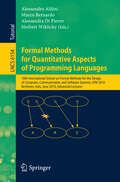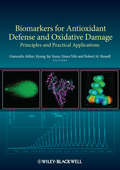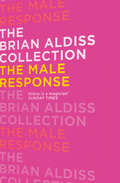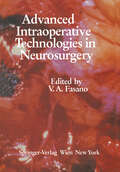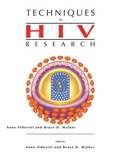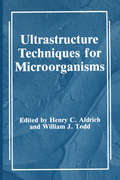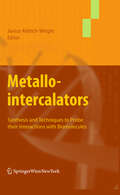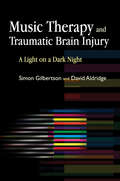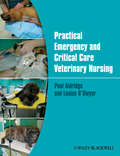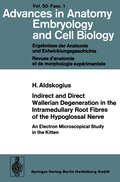- Table View
- List View
Critical Realism for Health and Illness Research: A Practical Introduction
by Priscilla AldersonCritical realism, as a toolkit of practical ideas, helps researchers to extend and clarify their analyses. It resolves problems arising from splits between different research approaches, builds on the strengths of different methods and overcomes their individual limitations. This original text draws on international examples of health and illness research across the life course, from small studies to large trials, to show how versatile critical realism can be in validating research and connecting it to policy and practice. To meet growing demand from students and researchers, this book is based on the course at University College London, first taught by Roy Bhaskar, the founder of critical realism.
Case Studies in Global School Health Promotion: From Research to Practice
by Carmen E. Aldinger Cheryl Vince WhitmanA growing body of research identifies strong links between children’s health, social and educational outcomes; it also notes the reciprocal benefits of access to quality education on individual and family health status. In response to these findings, the World Health Organization developed the concept of the Health-Promoting School (HPS), a living catalyst for healthy lives, and for positive changes that students can take home and into the community. Case Studies in Global School Health Promotion provides readers with a theoretical and research base needed to understand the methods used in communities all over the world to put this captivating concept in place. Case examples from over two dozen countries (representing urban and rural areas in developing and developed nations) outline the strategies taken to implement HPS programs in individual schools, municipalities, and nations. For each program, case study authors explain the problems they tackled, their motivation and supports to respond creatively; and the barriers they faced. In the cases, authors describe the capacities and infrastructure they created and mechanisms for cooperation; as well as the personnel, financial, and time requirements involved. Case studies were drawn from the following regions: Africa The Americas Europe Eastern Mediterranean South and Southeast Asia Western Pacific. Case Studies in Global School Health Promotion offers a world of insights, ideas, and guidance to those addressing social determinants of health at this formative stage, including: education and health policy makers; professionals and administrators; and researchers in national governments, universities, local schools, community, non-governmental organizations and civil society. The material provides interesting and useful information to those dedicated to these issues within WHO, FRESH Partners and other United Nations agencies. It is also an instructive text for graduate students in public health, education, allied health professions and social sciences.
Künstliches Kniegelenk: Fragen an die Spezialisten
by Peter Aldinger Joachim Herre Michael Clarius Martin JuergenViele Menschen leiden unter Kniegelenkschmerzen und sind stark in ihrer Mobilität und damit in ihrer Lebensqualität eingeschränkt. Ca. 160.000 Menschen erhalten jährlich in Deutschland einen Kniegelenkersatz. Vier Spezialisten geben Betroffenen und Interessierten einen Überblick über die Erkrankung, die Diagnostik, die Therapie und vor allem über den Verlauf nach einer Kniegelenkersatzoperation.
Formal Methods for Quantitative Aspects of Programming Languages: 10th International School on Formal Methods for the Design of Computer, Communication and Software Systems, SFM 2010, Bertinoro, Italy, June 21, 2010, Advanced Lectures (Lecture Notes in Computer Science #6154)
by Alessandro Aldini Marco Bernardo Alessandra Di Pierro Herbert WiklickyBiomarkers for Antioxidant Defense and Oxidative Damage: Principles and Practical Applications
by Giancarlo Aldini Kyung-Jin Yeum Etsuo Niki Robert M. RussellBiomarkers for Antioxidant Defense and Oxidative Damage: Principles and Practical Applications critically evaluates the basic concepts and methodologies of conventional biomarkers as well as current state-of-the-art assays for measuring antioxidant activity/oxidative stress and their practical applications. . Biomarkers for Antioxidant Defense and Oxidative Damage: Principles and Practical Applications will be of a great interest to scientists who are involved in basic research on oxidation, applied scientists evaluating the effects of nutraceuticals or pharmaceutical compounds on antioxidant activity/oxidative stress, and physicians who want to understand the degree of oxidative damage in patients with certain chronic diseases. Discovering sensitive and specific biomarkers for systemic oxidative damage is essential to understand the role of oxidative stress in human disease. Once these roles are clearly understood, we are able to identify novel drug and nutraceutical targets. This volume goes beyond conventional analytical methods of measuring overall antioxidant activity and provides insight to the discovery of biomarkers that reveal information on specific areas of oxidative stress. Contributed by an international list of experts, Biomarkers for Antioxidant Defense and Oxidative Damage: Principles and Practical Applications describes both conventional biomarkers and recent developments in this area. Special Features: Discusses conventional biomarkers as well as recent advances for measuring antioxidants and oxidative stress Biomarkers for lipid peroxidation: isoprostane, hydroxyloctadecaenoic acid, oxysterols, and reactive carbonyl species from lipid peroxidation Biomarkers for protein oxidation: carbonylation, tyrosine oxidation, ubiquitin-conjugation Biomarkers for DNA oxidative damage: comet assay, hydroxylated nucleotides, and exocylcic DNA adducts Recently developed biomarkers from cutting-edge technology
The Male Response (The Brian Aldiss Collection)
by Brian AldissWritten at the peak of the swinging sixties, this is an ironic, hilarious and frank investigation of sexual politics and the male sex drive. The Brian Aldiss collection includes over 50 books and spans the author’s entire career, from his debut in 1955 to his more recent work.
Nuclear Cardiology: Principles and Methods (Topics in Cardiovascular Disease)
by Aldo N. Serafini, Albert J. Gilson and William M. SmoakMyocardial Tissue Engineering (Studies in Mechanobiology, Tissue Engineering and Biomaterials #6)
by Aldo R. Boccaccini and Sian E. HardingMyocardial tissue engineering (MTE), a concept that intends to prolong patients’ life after cardiac damage by supporting or restoring heart function, is continuously improving. Common MTE strategies include an engineered ‘vehicle’, which may be a porous scaffold or a dense substrate or patch, made of either natural or synthetic polymeric materials. The function of the substrate is to aid transportation of cells into the diseased region of the heart and support their integration. This book, which contains chapters written by leading experts in MTE, gives a complete analysis of the area and presents the latest advances in the field. The chapters cover all relevant aspects of MTE strategies, including cell sources, specific TE techniques and biomaterials used. Many different cell types have been suggested for cell therapy in the framework of MTE, including autologous bone marrow-derived or cardiac progenitors, as well as embryonic or induced pluripotent stem cells, each having their particular advantages and disadvantages. The book covers a complete range of biomaterials, examining different aspects of their application in MTE, such as biocompatibility with cardiac cells, mechanical capability and compatibility with the mechanical properties of the native myocardium as well as degradation behaviour in vivo and in vitro. Although a great deal of research is being carried out in the field, this book also addresses many questions that still remain unanswered and highlights those areas in which further research efforts are required. The book will also give an insight into clinical trials and possible novel cell sources for cell therapy in MTE.
Advanced Intraoperative Technologies in Neurosurgery
by Victor AldoFasano R. E. Wharen R. Urciuoli A. W. Silberman J. M. Rubin I. L. Richmond A. Renieri R. W. Rand C. R. Neblett D. T. Mason T. Letardi G. Lee E. R. Laws P. J. Kelly R. M. Ikeda A. Harders J. M. Gilsbach V. A. Fasano M. S. B. Edwards G. J. Dohrmann M. C. Chan L. J. Cerullo J. E. Boggan R. E. AndersonSince the introduction of electrosurgery the techniques of surgery on the nervous system have passed through further improvements (bipolar coagulation, microscope), even if the procedure was not substantially modified. Today, laser represents a new "discipline", as it offers a new way of performing all basic maneuvers (dissection, demolition, hemostasis, vessel sutures). Furthermore, laser offers the possibility of a special maneuver, namely reduction of the volume of a tumoral mass through vaporization. Its application is not restricted to traditional neurosurgery but extends also to stereotactic and vascular neurosurgery. Laser surgery has also influenced the anesthesiologic techniques. At the same time new instrumentation has been introduced: CUSA ultrasonic aspiration, echotomography, and Doppler flowmeter. I have had the chance to utilize these new technologies all at a time and have come to the conclusion that we are facing the dawn of a new methodology which has already shown its validity and lack of inconveniences, and whose object is to increase the precision of neurological surgery. The technological development is still going on, and some improvements are to be foreseen. Laser scalpel is splitting the initial laser surgery into NO TOUCH and TOUCH surgery with laser. As new instrumentarium will be developed, a variable and tunable beam will become available. For example, in a few years Free Electron Laser will further add to the progress in this field.
Dust and Health: Challenges and Solutions (Emerging Contaminants and Associated Treatment Technologies)
by Ali Al-Dousari Muhammad Zaffar HashmiThis book discusses the sources, human health hazards and risk prevention strategies associated with aeolian dust particles (fine and ultrafine) in the atmosphere. It covers the challenges of accurately forecasting aeolian dust and the need to raise public awareness on the warning signs and harmful impacts of airborne dust. Also discussed is the presence of microorganisms, heavy metals and other pollutants in dust which contributes to harmful impacts on human health as well as management and treatment options for the various health issues that can result from exposure. The book is a useful resource for scientists, engineers and policymakers interested in dust and health.
Techniques in HIV Research
by Anna Aldovini Bruce WalkerA comprehensive compilation of research techniques necessary for investigating the virology, immunology and molecular biology of HIV-1. Protocols are also provided which represent state of the art approaches to a wide spectrum of HIV related issues.
E-Book A Guide to Starting your own Complementary Therapy Practice
by Elaine Mary AldredThis step-by-step guide on setting up own complementary health care practice, covers every aspect of starting up a new practice, taking into account the wide range of practice requirements from the very simple (e.g. in therapist's own home) to the more ambitious (e.g. buying premises from which to set up a clinic). It addresses all the legal requirements, detailed and precise financial calculations, and the mechanics of how the therapist goes about making their vision a reality. Day-to-day aspects that need to be considered when the practice is up and running are covered.Gives clear advice on legal and financial requirements, the production of a marketing strategy and the presentation of the precise financial calculations required for a business plan, with worked examplesIncludes detailed information on how to write a business plan, with a numerically linked exampleCovers day-to-day aspects of running a practiceInternational in its approach, the book contains extensive lists of useful web addresses for access to up-to-the-minute informationFinancial templates are supplied as appendicesThe book offers key advice for all therapists - chiropractors, osteopaths, massage therapists and complementary therapists - and is suitable for undergraduates, newly qualified practitioners and experienced practitioners looking to either start up or develop and grow their practice.
Pharmacology E-Book: A Handbook for Complementary Healthcare Professionals
by Elaine Mary AldredPharmacology: A Handbook for Complementary Healthcare Professionals provides an accessible text and source book of pharmacology for both students and practitioners of complementary medicine. It covers the basic chemistry which builds into an understanding of basic organic chemistry, key pharmacological principles, herbal and nutritional chemical constituents and the use of conventional medication. Various different aspects are treated in a way, which creates linkages for clarity and clinical relevance.Written in an accessible style and highly illustrated throughout.Relevant to all students and practitioners of complementary medicineEasy to readIncludes over 200 illustrationsWritten by a leading practitioner and lecturer in pharmacology
Ultrastructure Techniques for Microorganisms
by H. C. Aldrich William ToddThe modem microbiologist is often a real specialist who has difficulty under standing and applying many of the techniques beyond those in his or her own immediate field. On the other hand, most benefits to modem microbiology are obtained when a broad spectrum of scientific approaches can be focused on a problem. In early studies, electron microscopy was pivotal in understanding bacterial and viral morphology, and we still feel that we will understand a disease better if we have seen an electron micrograph of the causative agent. Today, because there is an increased awareness of the need to understand the rela tionships between microbial structure and function, the electron microscope is still one of the most important tools microbiologists can use for detailed analysis of microorganisms. Often, however, the aforementioned modem microbiologist still thinks of ultrastructure as involving negative staining or ultrathin sectioning in order to get a look at the shape of a "bug. " Many of the newer ultrastructure techniques, such as gold-labeled antibody localization, freeze-fracture, X-ray microanalysis, enzyme localization, and even scanning electron microscopy, are poorly under stood by, and therefore forbidding to, the average microbiologist. Even many cell biologists admit to having difficulty staying in touch with current develop ments in the fast-moving field of electron microscopy techniques.
Sleep Medicine (Contemporary Neurology Series #76)
by Michael S. AldrichThis book offers a concise, methodological approach to the evaluation and treatment of patients with sleep disorders. The management of sleep disorders requires an understanding of sleep itself, thus the book initially discusses aspects of normal sleep. The remainder of the book provides a formula for critical assessment, in which the symptoms and signs and the psychological and medical background of the patient, in conjunction with an understanding of the neurobiological and psychological basis of sleep disorders, are considered. Polysomnographic studies and other laboratory tests supplement and redefine clinical information and assist physicians in their treatment options.
Metallointercalators: Synthesis and Techniques to Probe Their Interactions with Biomolecules
by Janice Aldrich-WrightA comprehensive treatment of the characterisation techniques used in investigating inorganic and organic molecules that interact with biomolecules is presented to the reader in a clear fashion. The work consists of two parts: (i) synthetic aspects of metallointercalators along with targeting and improving transport and (ii) the various techniques that are used for probing their interactions, such as; DNA-NMR, PGSE-NMR, DNA ESI-MS, Linear and Circular Dichroism, Fluorescence Spectroscopy, Confocal Microscopy, Viscosity, TGA and dialysis, Microarrays, biological analysis. Chapters are devoted to the synthesis and the techniques used to study the interactions of inorganic complexes with biomolecules. Considerably detailed examples are used to help illustrate the application of these techniques. This book is a useful resource for an array of inorganic and organic advanced undergraduate and graduate courses and for researchers in drug discovery.
Music Therapy and Traumatic Brain Injury: A Light on a Dark Night
by David Aldridge Simon GilbertsonMusical improvisation is an increasingly recognised rehabilitative therapy for people who have experienced traumatic brain injury initially thought to be `unreachable' or `non-responsive'. Music Therapy and Traumatic Brain Injury demonstrates how music therapy can be used to attend to the holistic, rather than purely functional, needs of people affected by severe head trauma. Divided into three parts, the first section provides an introduction to the effects brain injury has on a person's livelihood. The second is a comprehensive review of available literature on the use of music therapy in the neurorehabilitative setting. The final section examines three case studies designed according to `therapeutic narrative analysis', an adaptive research method that uses interviewing and video, which focuses on the unique relationship between the professional and the patient. This book will give clinicians key notes for practice and a vision of the integral role music therapy can have in the successful rehabilitation from brain injury.
Music Therapy and Traumatic Brain Injury: A Light on a Dark Night (PDF)
by David Aldridge Simon GilbertsonMusical improvisation is an increasingly recognised rehabilitative therapy for people who have experienced traumatic brain injury initially thought to be `unreachable' or `non-responsive'. Music Therapy and Traumatic Brain Injury demonstrates how music therapy can be used to attend to the holistic, rather than purely functional, needs of people affected by severe head trauma. Divided into three parts, the first section provides an introduction to the effects brain injury has on a person's livelihood. The second is a comprehensive review of available literature on the use of music therapy in the neurorehabilitative setting. The final section examines three case studies designed according to `therapeutic narrative analysis', an adaptive research method that uses interviewing and video, which focuses on the unique relationship between the professional and the patient. This book will give clinicians key notes for practice and a vision of the integral role music therapy can have in the successful rehabilitation from brain injury.
Developing Healthcare Skills through Simulation
by Matthew Aldridge Stephen Wanless'This book provides an essential resource for educators of clinical skills who want to utilise simulation based education to provide optimal learning opportunities for their students.' Andrew Bland, University of Huddersfield 'In this book, a team of experienced authors have put together a much needed text that takes an evidence-based, practical approach to skills development.' Lauren Mawson, University of Cumbria 'A really exciting new text.' Sarah Burden, Leeds Metropolitan University Practice educators and mentors are now expected to have the skills and techniques needed to implement a 'learning skills through simulation' programme into established curricula, yet using simulation to teach - while of huge importance - requires careful and time-consuming planning. This valuable resource takes away some of that burden by providing clear, ready-made activities and guidance from leading practitioners in a range of fields, which healthcare and practice educators and mentors can use to enhance their teaching of all the essential and commonly-taught clinical and management skills and knowledge. Dedicated chapters, which all follow a defined step-by-step format, provide simulation scenarios, alongside facilitator guidance, which will help develop confidence in the teaching of key skills such as: - Drug administration - Conflict management - Infection control - Breaking bad news - Catheter and bowel care These scenarios and accompanying guidance can be used as a framework for teaching, promoting a greater understanding of the skill being taught, and providing a risk-free opportunity for the student to practice their clinical and managerial skills and judgement.
Developing Healthcare Skills through Simulation (PDF)
by Matthew Aldridge Stephen Wanless'This book provides an essential resource for educators of clinical skills who want to utilise simulation based education to provide optimal learning opportunities for their students.' Andrew Bland, University of Huddersfield 'In this book, a team of experienced authors have put together a much needed text that takes an evidence-based, practical approach to skills development.' Lauren Mawson, University of Cumbria 'A really exciting new text.' Sarah Burden, Leeds Metropolitan University Practice educators and mentors are now expected to have the skills and techniques needed to implement a 'learning skills through simulation' programme into established curricula, yet using simulation to teach - while of huge importance - requires careful and time-consuming planning. This valuable resource takes away some of that burden by providing clear, ready-made activities and guidance from leading practitioners in a range of fields, which healthcare and practice educators and mentors can use to enhance their teaching of all the essential and commonly-taught clinical and management skills and knowledge. Dedicated chapters, which all follow a defined step-by-step format, provide simulation scenarios, alongside facilitator guidance, which will help develop confidence in the teaching of key skills such as: - Drug administration - Conflict management - Infection control - Breaking bad news - Catheter and bowel care These scenarios and accompanying guidance can be used as a framework for teaching, promoting a greater understanding of the skill being taught, and providing a risk-free opportunity for the student to practice their clinical and managerial skills and judgement.
Practical Emergency and Critical Care Veterinary Nursing
by Paul Aldridge Louise O'DwyerYour step-by-step guide to key emergency and critical care procedures and hands-on nursing care. Whether you need to know how to prioritise your response to a patient with multiple injuries, or you need a quick practical guide to fluid therapy, this is the go-to resource. Colour photographs of real life cases take you through the procedures and after-care, detailing essential skills. This book provides vital information for emergency and critical care situations, whether you’re looking for confidence in handling emergency cases in a first-opinion practice, or a relevant, succinct guide for an emergency clinic. Be inspired to become more confident in your clinical skills and abilities, and learn how to apply your existing skills to an emergency situation. A companion website provides additional resources useful in the management of emergency and critical patients. Visit the website to find information charts and video clips of procedures. Written by a veterinary nurse and a veterinary surgeon who work together in the largest UK emergency clinic, this book is a practical, how-to manual with a nursing focus. Suitable as a complete reference for nurses studying towards qualifications, or as a practical guide for daily use by veterinary nurses working in veterinary emergency and critical care.
Practical Emergency and Critical Care Veterinary Nursing
by Paul Aldridge Louise O'DwyerYour step-by-step guide to key emergency and critical care procedures and hands-on nursing care. Whether you need to know how to prioritise your response to a patient with multiple injuries, or you need a quick practical guide to fluid therapy, this is the go-to resource. Colour photographs of real life cases take you through the procedures and after-care, detailing essential skills. This book provides vital information for emergency and critical care situations, whether you’re looking for confidence in handling emergency cases in a first-opinion practice, or a relevant, succinct guide for an emergency clinic. Be inspired to become more confident in your clinical skills and abilities, and learn how to apply your existing skills to an emergency situation. A companion website provides additional resources useful in the management of emergency and critical patients. Visit the website to find information charts and video clips of procedures. Written by a veterinary nurse and a veterinary surgeon who work together in the largest UK emergency clinic, this book is a practical, how-to manual with a nursing focus. Suitable as a complete reference for nurses studying towards qualifications, or as a practical guide for daily use by veterinary nurses working in veterinary emergency and critical care.
Benign Tumors of the Liver
by Luca Aldrighetti Francesco Cetta Gianfranco FerlaDiagnosis of benign liver tumors is experiencing exponential growth, mainly owing to the diffusion of more accurate imaging techniques. This monograph examines the epidemiology, histopathology and genetics of these tumors and provides a systematic overview of their evolution and differential diagnosis. Care is taken to document surgical indications accurately, with a view to assisting in the avoidance of useless interventions. Open, laparoscopic and robotic surgical techniques are described and illustrated, emphasizing the optimization of intra- and postoperative management in order to avoid potential complications and degeneration. In these chapters, attention is drawn to the ways in which the surgical management of benign liver tumors differs from that of malignant tumors. The book concludes by examining the role of interventional radiology in patients with benign liver tumors.
Indirect and Direct Wallerian Degeneration in the Intramedullary Root Fibres of the Hypoglossal Nerve: An Electron Microscopical Study in the Kitten (Advances in Anatomy, Embryology and Cell Biology #50/1)
by H. AldskogiusIn the previous study (Part I) a description was given of the ultrastructural changes occurring during indirect Wallerian degeneration in the intramedullary root fibre region of the kitten hypoglossal nerve. One of the striking features of this degeneration process was the appearance at an early stage of micro glial cells completely covered by myelin, which apparently participated in phago cytosis of degenerating axoplasm and to a small extent of their own myelin covering. Evidence was obtained indicating that the numerous degenerating glial cells seen somewhat later in the degeneration process were derived from these myelin-covered microglial cells. Since glial cells of the type described in the previous study have never been implicated in the process of direct Wallerian degeneration, the possibility exists that they may in fact be characteristic for indirect Wallerian degeneration. However, this possibility cannot be adequately assessed unless our present rather scanty knowledge concerning the early glial reaction during direct Wallerian degeneration is extended. Therefore the present study has been undertaken to examine the ultrastructural changes during direct W allerian degeneration in the kitten, with particular reference to the possible occurrence of myelin-covered microglial cells and degenerating glial cells of the type described in the previous study (see Part I). Since no systematic ultra structural study on direct Wallerian degeneration in immature animals seem to exist, observations on changes in the myelinated nerve fibres and the different types of glial cells have been included.



